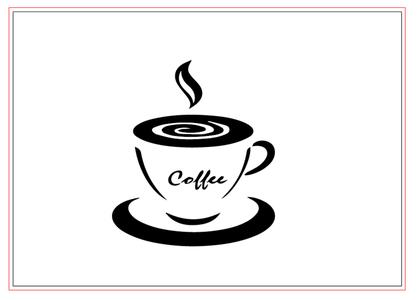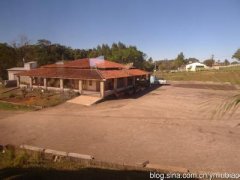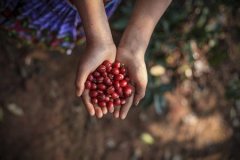Caramel-scented boutique coffee beans in Lindong, Sumatra, planting situation, geographical location, climate, simple altitude

Gold Mantenin, the Japanese adopted more stringent quality control more than a decade ago. After picking beans manually for four times, they eliminated defective beans and produced gold mantenin with dark green color and equal appearance of beans, creating another wave of market demand. Even Europe and the United States are crazy about it.
The aged Agedmandheling is as sweet as honey. The successful old bean has worn away Manning's inelegant sour taste. The sour ingredients are ripe and converted to sugar, making the coffee more round and sweeter to drink. Manning is like a coffee zombie in the old age of failure, and the taste is hard to taste.
Manning Coffee-Features
Manning coffee has a very strong flavor, fragrant, bitter, mellow, with a little sweetness. Most coffee lovers drink on their own, but it is also an indispensable variety for blending coffee.
As the Mantenin coffee beans themselves do not have sour characteristics, so the general special blending methods are based on Mantenin coffee beans, in the long-term heat preservation or preparation of iced coffee, there is no unpleasant sour taste.
After baking, the beans are very large, and the raw beans are brown or dark green with a special aroma like caramel and a mellow taste.
Java is the most economically developed island in Indonesia and the most densely populated area.
Jakarta, the capital of Indonesia, located in the northwest of Java, is the largest city in Southeast Asia. In addition, Indonesia's second and fourth largest cities are located on the island of Java.
Java is the first region in Indonesia to grow coffee and has taken the lead in the world coffee market as early as the 18th century. The famous Java mocha, made from Java coffee mixed with Yemeni mocha, represents the coffee impression of an era. In addition, there is the classic monsoon coffee Moosooned-coffee, or old coffee Aged Coffee.
Coffee cultivation in Java was originally carried out as a large farm, established by Dutch colonists in the 18th century, and gradually transformed into small farmers after World War II and many changes. High-quality Javanese coffee usually comes from five existing large farms. Although Java coffee production only accounts for about 10% of Indonesia's total coffee production, it is an important component of Indonesian boutique coffee.
The main coffee producing area on the island is located in Ijen Plateau, the Ijen Highland area around Ijen Volcano.
Java coffee is traditionally treated with water. Sulawesi Island, formerly known as Celebes Island "Celebes", is also called Celebes Coffee Celebes Coffee.
The most famous is Toraga, or Tonaga, Toraja.
Toraja coffee comes from Tana Toraja in the Tanatolaga region of South Sulawesi, South Sulawesi Province, named after the local population, the Toraga. Tana Toraja is located about 300km north of Makassar, the provincial capital of Wangkasek, and is a famous tourist destination in Indonesia.
At first, the coffee industry in Sulawesi mainly supplied the Japanese market, and Japanese businessmen established the original coffee industry on the island of Sulawesi.
The traditional method of coffee treatment is wet planer, Giling Basah,wet-hulled.
In Indonesia, coffee is not usually labeled as "Indonesia", but is preceded by the name of the island that produces it. Sumatran Mantenin, Java and Sumatra Ancora are usually regarded as one of the best coffees in the world, especially Manning, which is more popular. Coffee gourmets around the world once commented: "Sumatra Manning Coffee is the best coffee in the world."
The history of coffee cultivation in Sumatra began in the 18th century and was first introduced to the northern part of Sumatra, which has Lake dopa, Sumatra's largest freshwater lake, which is still the main producer of Sumatran coffee. Since coffee produced in Sumatra does not vary greatly in taste due to different producing areas, and even coffee from different producing areas, their harvest and processing processes are very similar, therefore, Sumatra is not named as a variety of coffee according to the producing area. In fact, most of the coffee beans produced in Sumatra are sold under the product name Mantenin, which has its own ethnic origin.
It is said that during World War II, when the Japanese occupied Indonesia, some Japanese soldiers went to a cafe run by the Mantenin to drink coffee. They thought the coffee provided by the owner was very good, so they asked the owner about the name of the coffee, and the owner mistakenly thought they were asking who they were, so they answered that they were from Mantenin. So the Japanese soldiers thought this kind of coffee was called Mantenin. After that, one of the Japanese soldiers thought that the coffee they drank in Indonesia was of great commercial value, and he wanted to introduce it to the Japanese market, so he contacted an Indonesian businessman. buy "Manning" coffee from him. Instead of rejecting the deal because there was no coffee called Mantenin, the shrewd businessman shipped 15 tons of coffee from Sumatra to Japan. Before that, high-quality and delicious Indonesian coffee had never been exported to any country, and since then, the name "Mantenin" has spread all over the world known as Mantenin mandheling, produced all over Lake Toba in northern Sumatra. The finished product has a unique fragrance of herbs and trees.
Important Notice :
前街咖啡 FrontStreet Coffee has moved to new addredd:
FrontStreet Coffee Address: 315,Donghua East Road,GuangZhou
Tel:020 38364473
- Prev

A brief introduction to the planting market price of Sumatra Lindong boutique coffee beans with strong flavor
Manning coffee is produced in Sumatra, Indonesia, Asia, also known as Sumatran coffee. The main producing areas are Java, Sulawesi and Sumatra, 90% of which are Robusta species. Among them, the "Mantelin" produced in Sumatra is the most famous. The best of the exquisite traditional Arabica coffee produced in northern Sumatra of Sumatra is called Lindong Lintong and Mann.
- Next

A brief introduction to the treatment method of grinding degree and baking degree of hard Sumatra Lindong boutique coffee beans
Sellers often mark Lintong Lindong and Mandheling Manning coffee as dry. In fact, the pulp and coffee seeds are often separated by a variety of mixing modes, and the more common is a backyard wet treatment. The smart farmer put the freshly picked coffee cherries into a simple peeling machine made of scrap metal, wood and bicycle parts. Then stick the peeled ones.
Related
- Detailed explanation of Jadeite planting Land in Panamanian Jadeite Manor introduction to the grading system of Jadeite competitive bidding, Red bid, Green bid and Rose Summer
- Story of Coffee planting in Brenka region of Costa Rica Stonehenge Manor anaerobic heavy honey treatment of flavor mouth
- What's on the barrel of Blue Mountain Coffee beans?
- Can American coffee also pull flowers? How to use hot American style to pull out a good-looking pattern?
- Can you make a cold extract with coffee beans? What is the right proportion for cold-extracted coffee formula?
- Indonesian PWN Gold Mandrine Coffee Origin Features Flavor How to Chong? Mandolin coffee is American.
- A brief introduction to the flavor characteristics of Brazilian yellow bourbon coffee beans
- What is the effect of different water quality on the flavor of cold-extracted coffee? What kind of water is best for brewing coffee?
- Why do you think of Rose Summer whenever you mention Panamanian coffee?
- Introduction to the characteristics of authentic blue mountain coffee bean producing areas? What is the CIB Coffee Authority in Jamaica?

